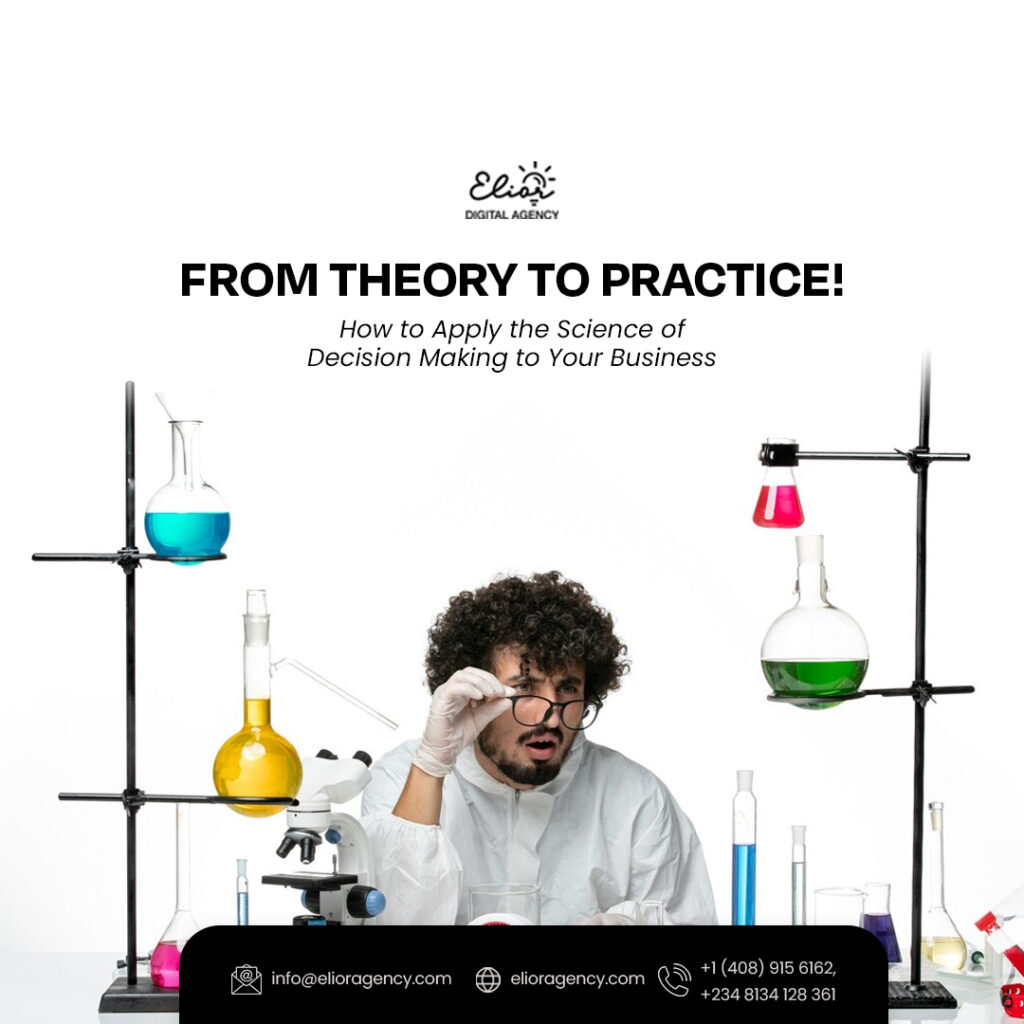
How to Apply the Science of Decision Making to Your Business
In our previous explorations, we have talked about the fascinating realm of decision-making science. Now, it’s time to translate theory into actionable strategies for your business.
Understanding Your Decision-Making Style
Before applying the science of decision making, it’s essential to understand your personal decision-making style.
Reflect on:
1. Your risk tolerance : How comfortable are you with uncertainty?
2. Your decision-making pace: Do you tend to act impulsively or take your time?
3. Your reliance on intuition: How much do you trust your gut feelings?
Recognizing Cognitive Biases
Cognitive biases are systematic errors in thinking that can influence your decisions. Familiarize yourself with common biases, such as:
1. Confirmation bias: The tendency to seek information that confirms your preconceptions.
2. Anchoring bias: The tendency to rely too heavily on the first piece of information encountered.
3. Availability heuristic: The tendency to overestimate the importance of information that readily comes to mind.
Applying Decision-Making Science to Your Business
1. Use Data-Driven Decision Making: Leverage analytics and data visualization to inform your choices.
2. Avoid Cognitive Biases: Be aware of common biases and actively work to mitigate their influence.
3. Foster a Culture of Experimentation: Encourage experimentation and learning from failures.
4. Develop a Decision-Making Framework: Establish a structured approach to decision making, such as cost-benefit analysis or decision trees.
Real-World Examples and Case Studies
1. Netflix’s Data-Driven Decision Making: How the streaming giant uses data to inform content creation and user experience.
2. Amazon’s Experimentation Culture: How the e-commerce leader encourages experimentation and learning from failures.
Implementing Decision-Making Science in Your Organization
1. Provide Training and Resources: Educate your team on decision-making science and provide tools to support data-driven decision making.
2. Establish a Decision-Making Process: Develop a clear, structured approach to decision making that encourages collaboration and critical thinking.
3. Encourage a Culture of Continuous Learning: Foster an environment where experimentation, learning from failures, and continuous improvement are valued.
Overcoming Common Challenges
1. Information Overload: Establish clear data governance and prioritize relevant information.
2. Groupthink: Encourage diverse perspectives and foster a culture of constructive debate.
3. Analysis Paralysis: Establish clear decision-making timelines and encourage iterative decision making.
Conclusion
By applying the science of decision making to your business, you’ll be better equipped to make informed, data-driven choices that drive growth and success. Remember to recognize cognitive biases, foster a culture of experimentation, and establish a structured decision-making process.
Take the Next Step
1. Assess your decision-making style: Reflect on your risk tolerance, decision-making pace, and reliance on intuition.
2. Develop a decision-making framework: Establish a structured approach to decision making that encourages collaboration and critical thinking.
3. Provide training and resources: Educate your team on decision-making science and provide tools to support data-driven decision making.
By taking these steps, you’ll be well on your way to making better decisions and driving business success
